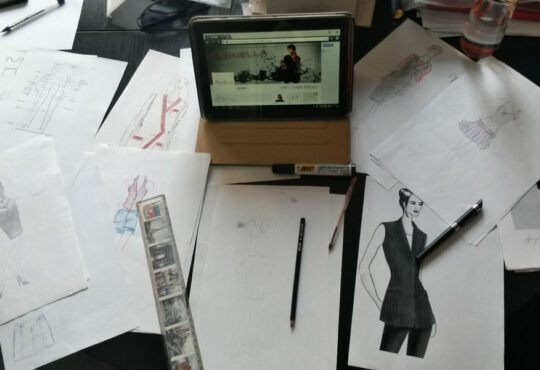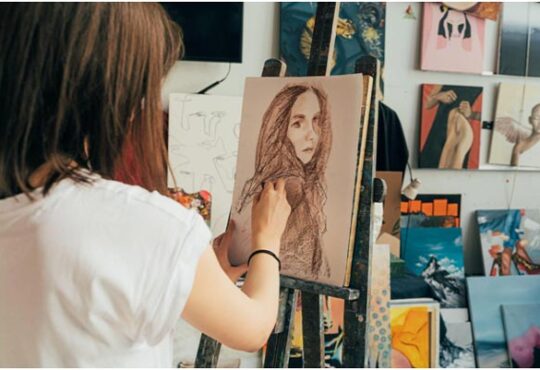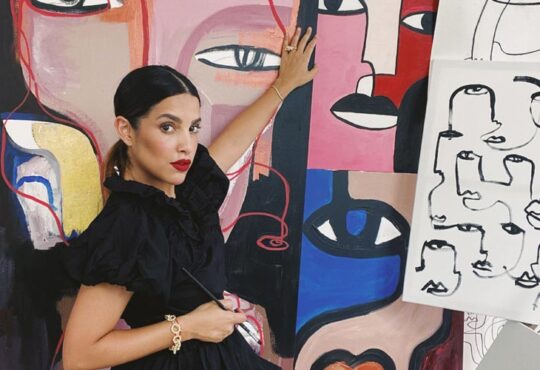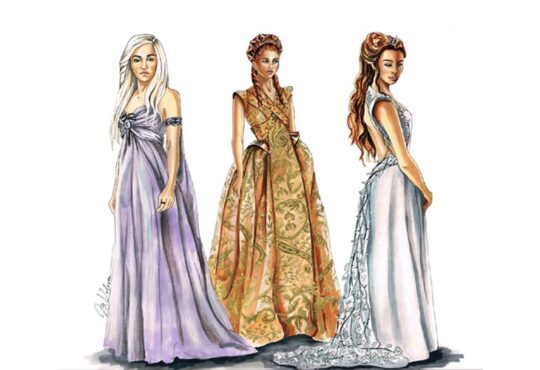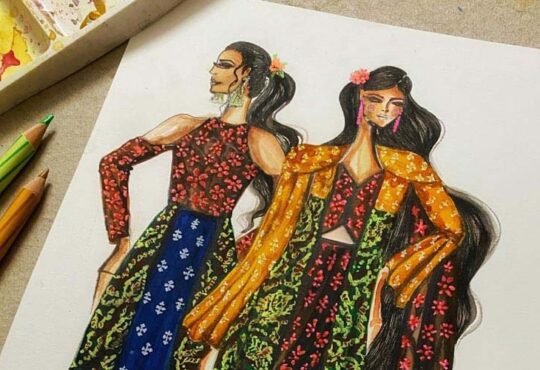How to Master Fashion Brand Illustrations in 5 Easy Steps
Fashion illustration is more than just drawing clothes.
It’s a form of art that captures the mood, personality, and style of the figure wearing the clothes.
It’s also a way to communicate your fashion brand’s vision and identity to your audience.
Whether you’re a beginner or a seasoned illustrator, there are always ways to improve your skills and create stunning artworks that stand out.
In this guide, we’ll share some strategies and tips on elevating your fashion brand illustrations and taking them to the next level.

1. Define Your Style and Niche
One of the most important aspects of fashion illustration is having a unique style and niche. These things set you apart from other brands who are doing the same thing.
You must experiment with different mediums, techniques, colors, and themes to find your style and niche. You also need to research and study other fashion illustrators who inspire you and see how they create their artworks.
Here are some questions to think about:
- What style of clothing do you enjoy sketching? Is it haute couture, streetwear, vintage, bohemian, or something else?
- What emotion do you want to express? Is it playful, elegant, edgy, romantic, or something else?
- What type of model do you prefer to sketch? Is it realistic, stylized, exaggerated, or something else?
- What instruments do you enjoy using? Is it traditional (ink, marker, watercolor) or digital (Photoshop, Illustrator, Procreate)?
Once you have a clear idea of your style and niche, you can develop your portfolio and brand identity. You can leverage social media platforms like Instagram or Pinterest to showcase your work.
2. Master the Basics of Anatomy and Proportion
Another essential fashion illustration skill is mastering anatomy and proportion basics.
Anatomy explores the human body and its structure. Proportion is the relationship between the size and shape of different body parts.
Anatomy and proportion are important in fashion illustration because they help you create realistic and believable figures that can wear your clothes. They also help you create dynamic poses and movements that add life and interest to your drawings.
Start practicing drawing from life and references. You can use models, mannequins, magazines, or online resources to study how the human body looks and moves. You can also use guidelines and measurements to help you draw accurate proportions.
One common method for drawing proportions is using the head as a unit of measurement.
In fashion illustration, artists normally divide the figure into 8 or 9 heads (depending on the style), each representing a different body section.
For example:
- The first head is the head itself
- The second head is the neck and shoulders
- The third head is the chest and bust
- The fourth head is the waist and hips
- The fifth head is the upper legs
- The sixth head is the lower legs
- The seventh head is the feet
- The eighth head (optional) is the hair
Using this method, you can draw a basic skeleton or stick figure that outlines the shape and position of the body. You can add details like muscles, bones, joints, and curves to make it more realistic.
3. Learn How to Draw Different Types of Fabrics and Textures
Fabrics and textures are what give your clothes their character and personality. They also help you create contrast and variety in your drawings.
When you draw fabrics and textures, you should know how they fit on the body and how they change with light and shadow.
Some common types of fabrics and textures are:
- Cotton: A soft and natural fabric that wrinkles easily and has a matte finish.
- Silk: A smooth and shiny fabric that drapes well and reflects light.
- Denim: A sturdy and durable fabric with a rough texture that fades over time.
- Leather: A tough, flexible fabric with a glossy finish and creases along seams.
- Fur: A warm and fluffy fabric that has a fuzzy texture and varies in color.
- Lace: A delicate and intricate fabric with a transparent or semi-transparent appearance.
To draw these fabrics and textures, you can use different techniques, such as:
- Hatching: Drawing parallel lines to create shading and depth.
- Cross-hatching: Drawing intersecting lines to create darker shades and patterns.
- Stippling: Drawing small dots to create texture and detail.
- Blending: Smoothing out the edges and transitions between colors and tones.
- Erasing: Removing parts of the drawing to create highlights and negative space.

4. Experiment with Different Perspectives and Compositions
Perspectives and compositions are how you arrange your elements on the page and create a sense of depth and space.
Perspectives are the angles or points of view from which you draw your figure and clothes. They can help you create different impressions and emotions in your drawings. For example:
- Front view: A straight-on perspective that shows the figure and clothes in full detail. It can create a sense of confidence and directness.
- Side view: A sideways perspective that shows the figure and clothes in the profile. It can create a sense of movement and dynamism.
- Three-quarter view: A diagonal perspective that shows the figure and clothes in between front and side views. It can create a sense of balance and harmony.
- Bird’s eye view: A high-angle perspective that shows the figure and clothes from above. It can create a sense of drama and exaggeration.
- Worm’s eye view: A low-angle perspective that shows the figure and clothes from below. It can create a sense of power and dominance.
Compositions are the arrangements or layouts of your elements on the page. They can help you create different focal points and interests in your drawings. For example:
- Centered composition: A symmetrical composition that places the figure and clothes in the center of the page. It can create a sense of stability and importance.
- Rule of thirds composition: An asymmetrical composition that divides the page into three horizontal and vertical sections. It can create a sense of balance and variety.
- Diagonal composition: A dynamic composition that uses diagonal lines or shapes to guide the eye across the page. It can create a sense of movement and tension.
- Framed composition: A creative composition that uses elements like windows, doors, mirrors, or shapes to frame the figure and clothes. It can create a sense of depth and context.
5. Add details and accessories to enhance your drawings
These finishing touches make your drawings more realistic, interesting, and appealing.
Details are the small or subtle elements that add texture, pattern, or contrast to your drawings. They can include things like:
- Buttons, zippers, pockets, or seams on clothes
- Wrinkles, folds, or creases on fabrics
- Stitches, embroidery, or appliques on garments
- Hair, makeup, or facial features on figures
- Shadows, highlights, or reflections on surfaces
Accessories are the extra or optional elements that add style, personality, or function to your drawings. Some of the common accessories used in fashion brand illustrations are:
- Hats, scarves, gloves, or sunglasses
- Jewelry, watches, belts, or pins
- Bags, shoes, socks, or stockings
- Umbrellas, books, flowers, or pets
Try to make your fashion brand illustrations more complete, expressive, and attractive with these small details.
Conclusion
Fashion illustration is a fun and rewarding way to showcase your fashion brand’s vision and identity.
Follow the steps we talked about in this article, and you can make your designs more professional, creative, and impressive.
Happy drawing!


